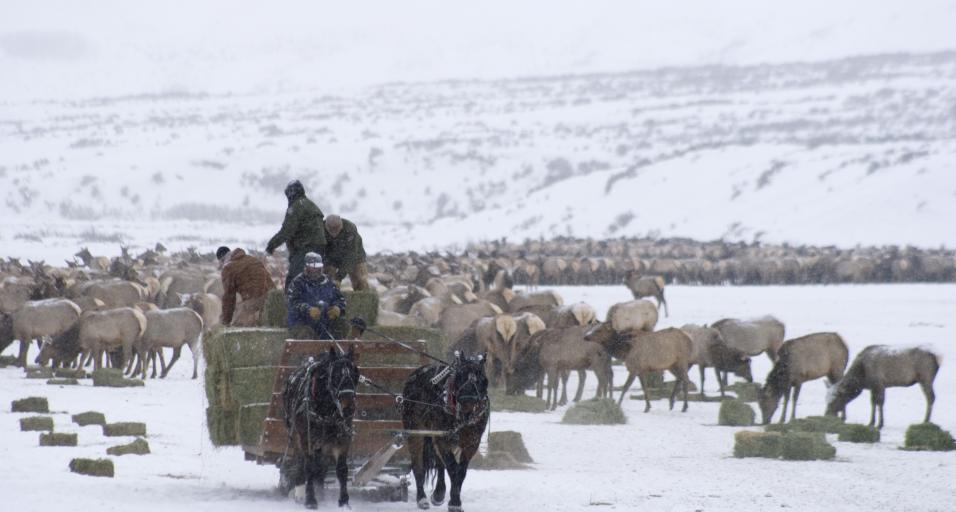The Wyoming Game and Fish Department is moving forward with Phase II of the public collaborative process, Elk Feedgrounds: A challenge we can take on.
“It’s been several years since Game and Fish fully evaluated management of the state's 22 elk feedgrounds,” said Brian Nesvik, director of Game and Fish. “This process is the next step in the necessary progression of wildlife management where we must continually evaluate science and emerging needs and issues related to our programs. It’s an important evaluation, and we believe in doing it alongside our diverse stakeholders.”
This summer, Phase II began with a series of public meetings held across the state to outline the next steps in the public collaborative and invite interested members of the public to sign on as stakeholders. Stakeholder groups include agriculture/landowners, government/elected representatives, sportspersons, nongovernmental organizations, hunting outfitters and guides, general public and academics. A list of the stakeholders and their associated focus groups can be found on the Elk Feedgrounds - A challenge we can take on website.
The multi-phased public process, which will culminate with the development of a long-term elk feedgrounds management plan, began last fall with initial public shared-learning sessions.
“In Phase I, the public presentations were focused on ‘the why’ for Game and Fish-operated elk feedgrounds,” said Scott Edberg, deputy chief of wildlife and chair of the elk feedgrounds steering team. “Phase II is designed to have more in-depth engagement with the various stakeholder groups on elk feedgrounds management.”
Beginning in early November, Game and Fish will host weekly shared learning opportunities for stakeholders on feedgrounds-related issues that were identified in Phase I. The more in-depth shared learning sessions will conclude in early February with an opportunity for all stakeholders to provide Game and Fish with their feedback. Within their stakeholder focus groups, participants will be asked to share perspectives, concerns and creative ideas in an open, respectful manner with members of the department’s elk feedgrounds steering team for use in the development of the long-term elk feedgrounds management plan.
“Through this process, we would like stakeholders to get past simply being ‘for or against’ elk feedgrounds,” said Edberg. “We want to engage in discussions that collaboratively come up with creative ways to manage elk in northwestern Wyoming.”
Edberg noted any number of options are on the table as long as they align with the primary objectives of the department.
“Game and Fish must manage elk in ways that will mitigate disease transmission to cattle and between elk and other wildlife species,” Edberg said. “Other primary objectives of the Game and Fish include reducing private property damage, maintaining publicly-supported elk population objectives and hunting opportunity, while also managing elk competition with other species like mule deer on critical winter range habitats.”
An initial draft of the feedgrounds management plan is slated to be available for public review in June 2022. Revisions to the draft plan will be made based on public and stakeholder feedback. Ultimately, it is planned to bring the long-term elk feedgrounds management plan before the Wyoming Game and Fish Commission for approval in the spring 2023.
To learn more please visit the Elk Feedgrounds - A challenge we can take on website.
Game and Fish continues with elk feedgrounds collaborative process
Mark Gocke, Public Information Specialist - 307-249-5811


